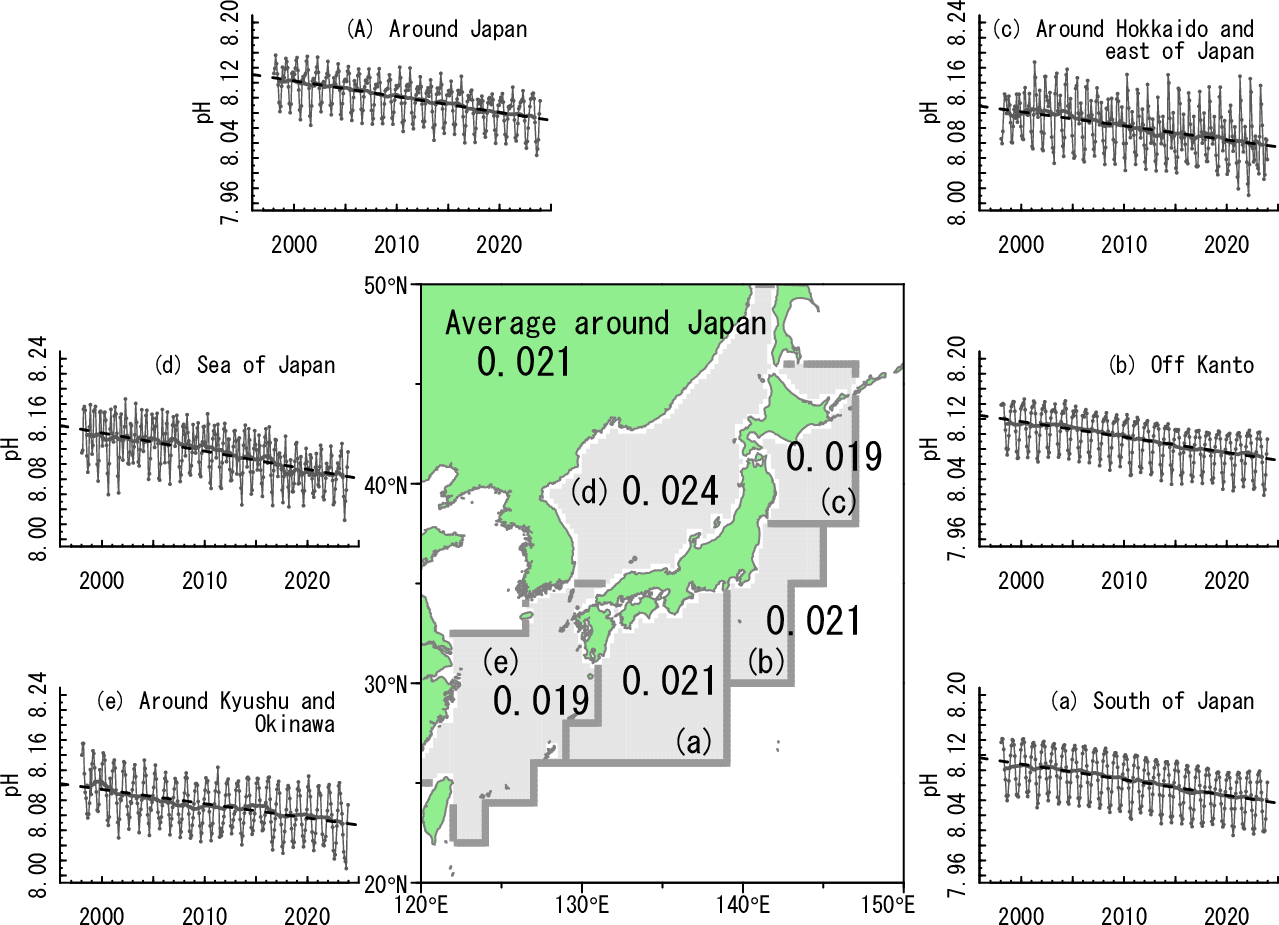Updated on 5 Mar. 2025
Japan Meteorological Agency
Values of pH in surface seawater have shown a clear long-term trend of decrease in the seas around Japan since 1998. The rate of decrease is approximately 0.02 per decade at each area, which is almost the same rate as that for global ocean.

Long-term trends of pH in sea areas around Japan
Black points with lines, bold lines and thin lines indicate average pH values, yearly running means and long-term trends in areas (a) to (e), and the average around Japan, respectively.
Oceans today are slightly alkaline with a surface pH of around 8.1. However, a long-term trend of pH decrease, known as ocean acidification, is observed due largely to the dissolution of atmospheric carbon dioxide (CO2) in ocean water. As the concentration of atmospheric CO2 is steadily increasing, there are concerns that oceans may be acidified in the future.
To monitor the long-term variability of ocean acidification, the Japan Meteorological Agency (JMA) has analyzed monthly sea surface pH values since 1998 based on data from its oceanographic observations and related database content. The results show a clear trend of in-situ pH decrease in seas around Japan ranging from 0.019 per decade around Kyushu and Okinawa to 0.025 per decade in the Sea of Japan. The average trend in sea areas around Japan is 0.022 per decade. These values are similar to observed rates of pH decrease in worldwide open oceans as recorded in the IPCC sixth assessment report (IPCC, 2021).